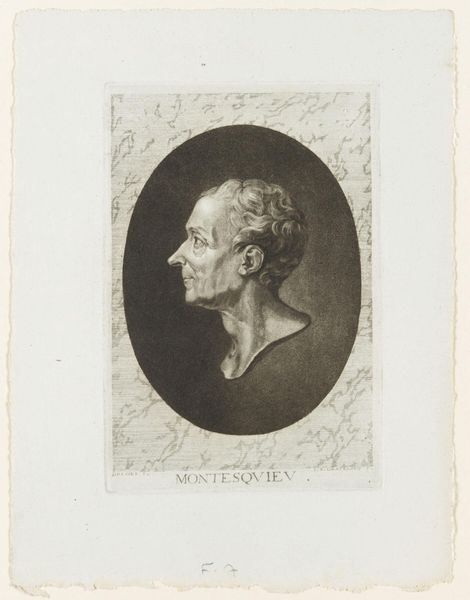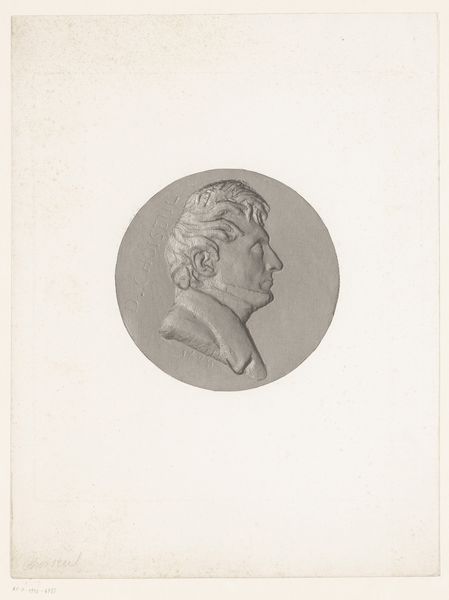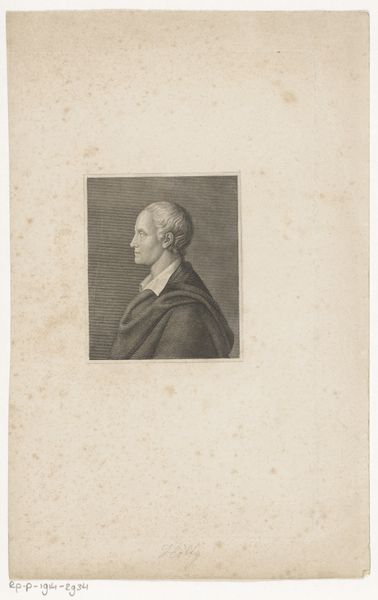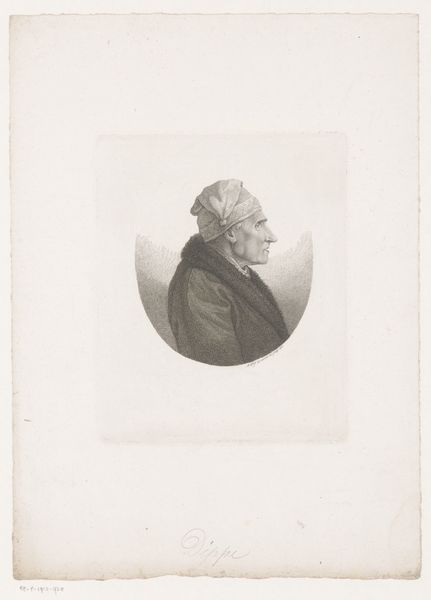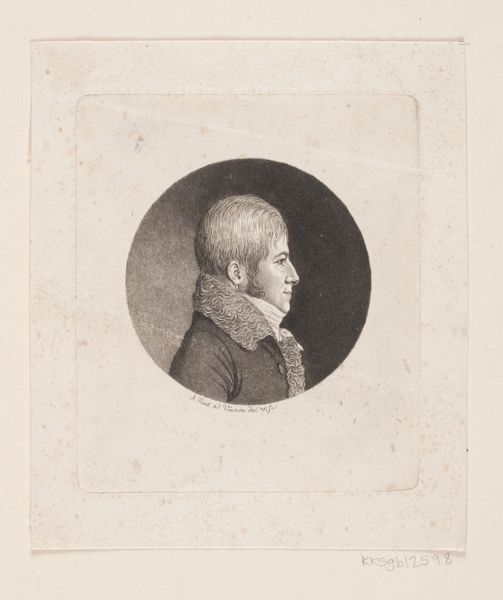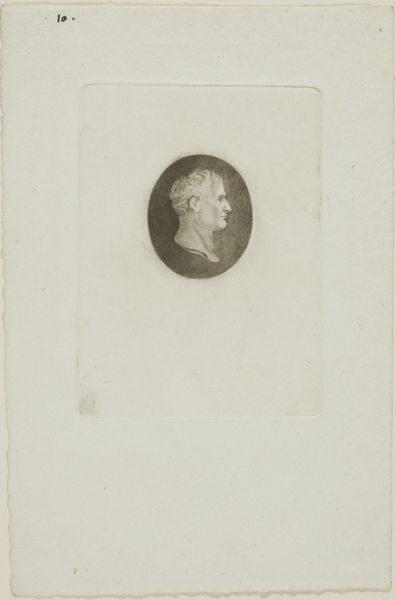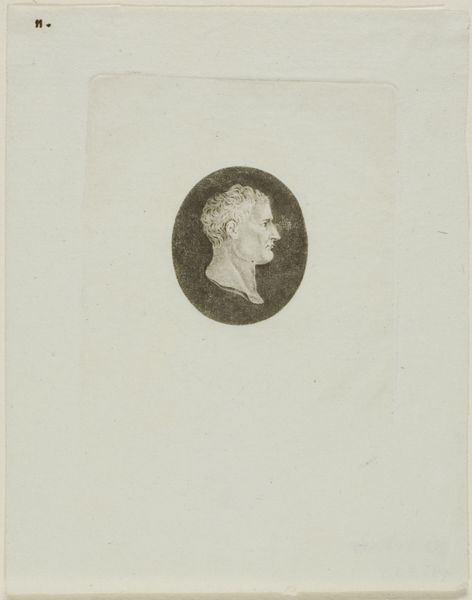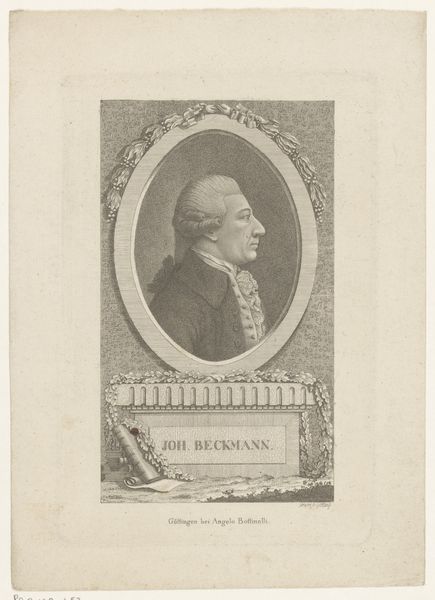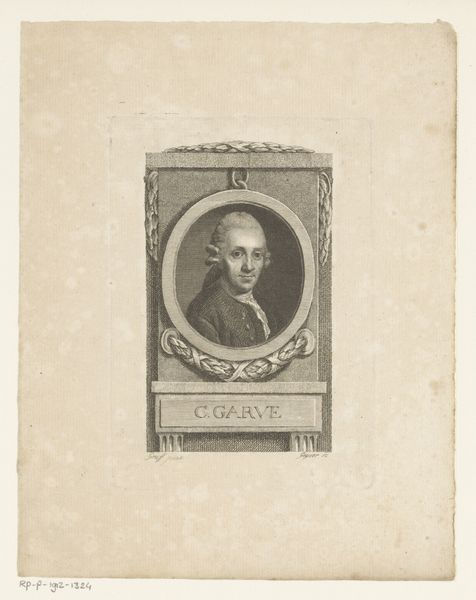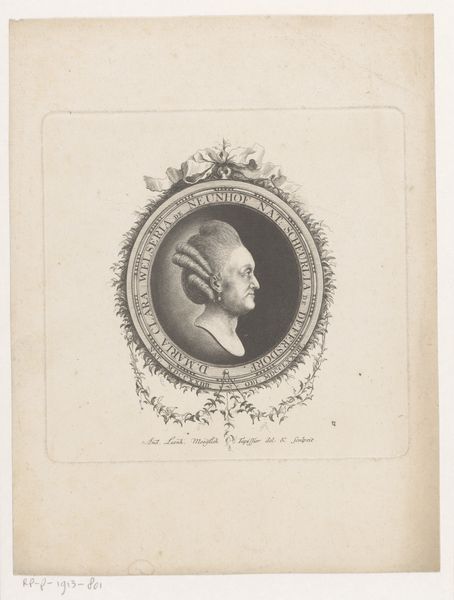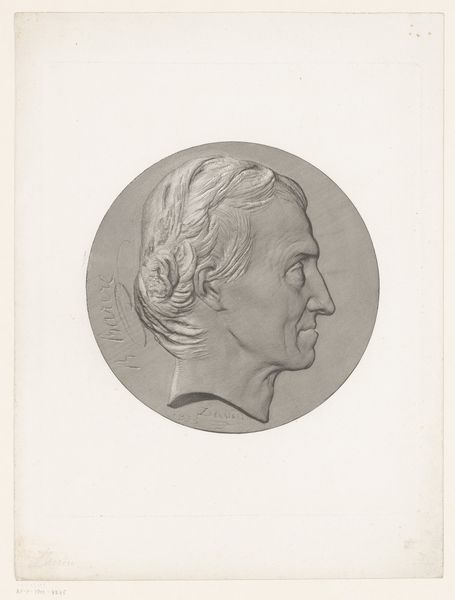
drawing, print, paper
#
photo of handprinted image
#
drawing
#
toned paper
# print
#
repetition of white
#
white palette
#
possibly oil pastel
#
paper
#
carved into stone
#
underpainting
#
france
#
tonal art
#
remaining negative space
#
watercolor
Dimensions: 107 × 72 mm (image/plate); 175 × 125 mm (sheet)
Copyright: Public Domain
Editor: This is an undated print entitled "Montesquieu" by Jean-Baptiste de Grateloup, held here at the Art Institute of Chicago. The image has a very classical feel. It seems formal and intellectual. What symbols jump out at you in this piece? Curator: Well, immediately I notice the oval frame – a 'cartouche,' echoing ancient Roman portraiture – immediately suggesting status and intellect. Then there's the surrounding script. Is it legible? No, it's abstracted. It functions almost as a halo, or perhaps wallpaper, implying his world is filled with texts, with ideas. Consider what Montesquieu represented, a key Enlightenment thinker advocating for the separation of powers. This portrait captures more than just his likeness; it aims to immortalize his intellectual legacy. Do you see how the profile view, common in coinage, further emphasizes this sense of lasting importance? Editor: That’s interesting. So the print itself almost functions like a symbolic coin, circulating Montesquieu's ideas through his image? Curator: Precisely. And consider the technique – the etching or engraving process itself requires precision and control, reflecting the intellectual discipline Montesquieu championed. The cool tones, the calculated shading...they all contribute to an image of measured rationality. But, perhaps even more striking is the surrounding paper which is deteriorating around the edges - signifying his ideas cannot be preserved despite the rigid symbolic codes used by the artist. What ideas or questions does that consideration provoke? Editor: That contrast really changes the way I see the print! I came in thinking ‘classical portrait,’ but the symbols are pushing at something more dynamic and relevant to now, in questioning whether certain ideas persist. Thanks, this has been illuminating! Curator: Indeed, recognizing these symbols opens pathways to understanding how images function, across eras, shaping and reshaping our cultural memory.
Comments
No comments
Be the first to comment and join the conversation on the ultimate creative platform.
